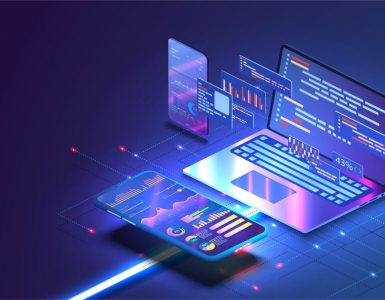In the ever-evolving landscape of technology, serverless computing has emerged as a game-changer for backend development. This innovative approach allows developers to focus on code and functionality while the complexities of infrastructure management are abstracted away.
In this blog post, we’ll explore the concept of serverless computing, how it works, its benefits, common use cases, challenges, best practices, and real-world examples. We’ll also touch on predictions for the future of serverless computing in backend development.
What is Serverless Computing?
Serverless computing, commonly known as Function as a Service (FaaS), represents a cloud computing model where developers write and deploy code in the form of functions, and the cloud provider manages the infrastructure, runtime, and scaling automatically.
In a serverless architecture, developers are freed from concerns about provisioning and maintaining servers, allowing them to focus solely on writing code.
How Serverless Computing Works?
Serverless computing operates based on the following key principles:
- Serverless Functions: In this paradigm, code is broken down into small, single-purpose functions. Each function performs a specific task and is stateless, meaning it doesn’t store data between invocations.
- Trigger-Based Execution: Serverless functions are executed in response to certain events or triggers, such as HTTP requests, database changes, or file uploads. These triggers are what initiate the execution of the serverless functions.
- Automatic Scaling: The serverless platform automatically scales the number of function instances to accommodate the incoming workload. This elasticity ensures optimal performance without manual intervention.
Benefits of Serverless Computing for Backend Development
Serverless computing offers numerous advantages for backend development:
- Improved Developer Productivity: With serverless, developers can concentrate on writing code and developing features rather than managing servers. This leads to higher productivity and faster development cycles.
- Cost Savings: Serverless computing follows a pay-as-you-go model, meaning you only pay for the resources your code consumes. This results in significant cost savings, especially for applications with varying workloads.
- Scalability: Serverless applications automatically scale to meet demand, ensuring that your application can handle traffic spikes without any manual intervention.
- Reduced Operational Complexity: The need to manage servers and infrastructure is eliminated, reducing operational complexity and allowing developers to focus on application logic.
- Easy Integration: Serverless platforms typically offer pre-built services and integrations, simplifying the process of building and deploying applications. This facilitates quicker development and reduces the need to reinvent the wheel.
Common Use Cases for Serverless Computing in Backend Development
Serverless computing can be applied to a wide range of backend development use cases, including:
- API Backends: Serverless functions are an excellent choice for building RESTful APIs or GraphQL services, as they can easily handle incoming HTTP requests and provide rapid responses.
- Real-time Data Processing: Serverless is ideal for processing real-time data streams, such as chat applications, IoT devices, or event-driven data pipelines.
- Background Processing: Tasks like image or video processing, data extraction, and file conversion can be efficiently handled by serverless functions.
- Microservices: Serverless architecture supports the creation of microservices that can be independently deployed and scaled.
Challenges of Using Serverless Computing for Backend Development
While serverless computing offers many benefits, it’s not without its challenges:
- Vendor Lock-In: Serverless platforms are often tightly integrated with a specific cloud provider, making it difficult to switch providers without significant code modifications.
- Debugging and Troubleshooting: Debugging serverless functions can be more challenging due to their distributed nature. Proper logging, monitoring, and error handling are crucial.
- Managing Serverless Applications: As the complexity of your application grows, managing multiple serverless functions and their dependencies can become complex. Proper organization and version control are key.
Best Practices for Using Serverless Computing for Backend Development
To make the most of serverless computing, consider the following best practices:
- Choose the Right Serverless Platform: Select a platform that aligns with your application’s requirements, performance, and vendor support.
- Design Efficient Serverless Functions: Keep functions small, focused, and stateless. Minimize dependencies to reduce execution time and costs.
- Use Event-Driven Architecture: Embrace event-driven patterns to enable seamless scaling and responsiveness to incoming triggers.
- Monitor and Test Regularly: Implement robust monitoring and testing strategies to detect and address issues proactively, ensuring the reliability of your serverless applications.
Real-World Examples of Serverless Computing in Backend Development
Several organizations have successfully adopted serverless computing in their backend development. Here are a few notable examples:
- Netflix: Netflix leverages serverless computing for various purposes, including user data processing, A/B testing, and recommendation algorithms. They rely on AWS Lambda to power their serverless infrastructure.
- AWS Lambda: AWS Lambda is Amazon’s FaaS offering and is used by countless organizations for a wide range of backend tasks, from data processing to application scaling.
- Google Cloud Functions: Google Cloud Functions allows developers to build event-driven serverless applications. It has found use in applications that require real-time data processing and dynamic scaling.
- Azure Functions: Microsoft’s Azure Functions is another prominent FaaS platform, suitable for a variety of backend scenarios, including serverless APIs, data processing, and chatbots.
- Serverless in E-commerce: In the e-commerce sector, serverless computing is being employed to handle tasks like inventory management, order processing, and recommendation systems. Retail giants are increasingly turning to serverless solutions to streamline their operations.
- Serverless in IoT: Internet of Things (IoT) applications often involve managing a large number of connected devices. Serverless computing is ideal for handling the data generated by these devices, processing it in real-time, and triggering actions or alerts based on the data received.
- Serverless in Finance: Financial institutions use serverless computing to process transactions, analyze data for fraud detection, and deliver real-time market insights to customers. The ability to scale automatically is particularly valuable in the finance industry.
Future of Serverless Computing in Backend Development
In this dynamic and ever-changing landscape, serverless computing is set to play an even more significant role in backend development.
The serverless paradigm aligns well with the demands of modern applications, and its ability to automatically scale and handle variable workloads makes it a valuable asset for organizations in an era of digital transformation.
As the technology continues to evolve and cloud providers enhance their offerings, we can expect even more innovative use cases and broader adoption of serverless computing in the future, shaping the way we build and manage the backend of our applications.
Serverless is becoming the foundation for next-generation applications that require efficiency, scalability, and reduced operational overhead.
FAQs (Frequently Asked Questions)
What is the difference between serverless and traditional server-based architectures for backend development?
Serverless architecture abstracts away server management, allowing developers to focus solely on code, while traditional server-based architectures require managing and provisioning servers. Serverless is event-driven and auto-scales, while traditional servers require manual scaling.
Is serverless computing suitable for all types of applications?
Serverless computing is well-suited for a wide range of applications, but it may not be ideal for long-running tasks or applications with consistently high workloads. It’s vital to assess the specific requirements of your application.
How does serverless computing handle security concerns?
Serverless platforms often provide security features, but it’s essential for developers to implement proper security practices in their code. Serverless security concerns include data protection, access controls, and securing function endpoints.
Can I use multiple serverless platforms within the same application?
While technically possible, it’s generally not recommended to mix multiple serverless platforms within a single application due to potential complexity and challenges in managing dependencies. Stick with one platform for simplicity.
What are the cost considerations for serverless computing?
Serverless follows a pay-as-you-go model, which can lead to cost savings. However, it’s essential to monitor usage, as costs can increase with high and unpredictable workloads. Proper resource management is key to cost efficiency.
How can I ensure that my serverless application is performant and scalable?
To ensure a performant and scalable serverless application, follow best practices such as designing efficient functions, using event-driven architecture, and implementing robust monitoring and testing. Regularly optimize your code for better performance.
What is a cold start in serverless computing, and how can it impact application performance?
Cold start is the delay experienced when a serverless function is executed for the first time or after a period of inactivity. It can impact application performance by introducing latency. Optimizing your functions and using provisioned concurrency can mitigate cold start issues.
Wrapping up
The future of backend development belongs to serverless computing, and the possibilities are limitless. It is an exciting era for developers and businesses alike as they harness the potential of serverless computing to build the next generation of applications.






Add comment